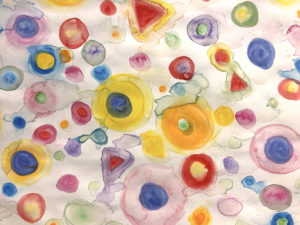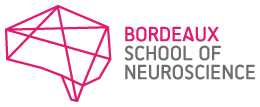Understanding the cellular complexity of the nervous system is a key endeavor in the pursuit to reveal the biological underpinnings of brain function. The recent methodological development of high-throughput single-cell profiling techniques and analysis has emerged as an essential tool for characterizing cellular diversity in the brain offering data sets that hold the promise of being complete, accurate and permanent. This course will teach central ideas, methods, and practices of single cell profiling and hands-on computational analysis through a combination of lectures from prominent international faculty speakers, experimental projects and data analysis workshops.
The course will include practical training in small groups of students on single cell methodologies and computational and statistical data analysis needed to interpret large data sets. This integration of data analysis with hands-on experiments will allow the students to gain knowledge in technical performance as well as biological interpretation of single cell data sets.
This advanced course is aimed for graduate students from a variety of disciplines, including neuroscience, physics, computer science and applied mathematics. Students are expected to have a keen interest and basic background in neurobiology, and to fully benefit from the data analysis it is expected that the students have at least a basic knowledge in programming.
Course director & co-directors
- Jens Hjerling-Leffler (Karolinska Institute, Sweden)
- Peter Kharchenko (Harvard Medical School, USA)
- Ana Munoz-Manchado (University of Cádiz/INiBICA, Spain)
- Alexandre Favereaux (University of Bordeaux, France)
June 20 – 9:00am
Jens Hjerling-Leffler (Karolinska Institute, Sweden)
Single-cell analysis in the brain and why it matters for disease
June 20 – 11:00am
Ed Lein (Allen Institute for Brain Science, USA)
June 21 – 9:00am
Kenneth Harris (University College London, UK)
A transcriptomic axis predicts state modulation of cortical interneurons
June 21 – 11:00am
Ana Munoz Manchado (University of Cadiz, Spain)
Cellular complexity and genetic mechanisms in neurodegenerative disorders
June 23 – 9:00am
Peter Kharchenko (Harvard Medical School, USA)
Analysis of inter-individual variation population-scale scRNA-seq data
June 23 – 11:00am
Company Demo
Parse Biosciences
June 27 – 9:00am
Ana Martin-Villalba (University of Heidelberg, Germany)
Application of scNMT to analyze lineage transitions of neural stem cells within the adult brain
June 29 – 9:00am
Company Demo
10x Genomics
June 29 – 11:00am
Company Demo
Illumina
June 30 – 9:00am
Kun Zhang (University of California, USA)
Multi-omics and spatial mapping of single cells in human adult brains
June 30 – 11:00am
Yves Le Feuvre (University of Bordeaux, France)
Exploring GABAergic control of mecanosensation in spinal cord through combined electrophysiologic and -omics approaches
Marek Bartosovic (Karolinska Institutet, Sweden)
Lisa Bast (Karolinska Institutet, Sweden)
Pierre Boyeau (Berkeley – Eecs, USA)
Hattie Chung (Broad Institute/MIT, USA)
Lisbeth Harder (Karolinska Institutet, Sweden)
Martin Häring (University Clinic Münster, Germany)
Hannah-Sophie Hochgerner (Technion, Israel)
Sergey Isaev (Moscow Institute Of Physics And Technologies, Russia)
Danny Kitsberg (Jerusalem University, Israel)
Gioele La Manno (EPFL, Switzerland)
Christoffer Langseth (Stockholm University, Sweden)
Christian Mayer (Max Plank Institute, Germany)
Viktor Petukhov (University Of Copenhagen, Denmark)
Anna Schaar (Helmholtz Zentrum München, Germany)
Ruslan Soldatov (Harvard Medical School, USA)
Milda Valiukonyte (Karolinska Institutet, Sweden)
Zinah Wassouf (Wellcome Sanger Institute, UK)
- Project 1: Visualization and quantification of cellular complexity of the CA1 region of the mouse brain
- Project 2: Understanding cellular maturation during the development of the embryonic nervous system by whole-cell RNA seq
- Project 3: GABAergic neuronal diversity across different forebrain structures
- Project 4: Single whole cells analysis of an Alzheimer’s disease mouse model
- Project 5: Single nuclei analysis of an Alzheimer’s disease mouse model
- Project 6: Single nuclei analysis of GABAergic cells in the dorsal horn in a chronic pain model
- Project 7: Single whole cells analysis of GABAergic cells in the dorsal horn in a chronic pain model
- Project 8: Large scale single-cell RNA-sequencing of brain tissue using SPLiT-Seq
- Project 9: Single-cell profiling of histone modifications in the mouse cortex using scCUT&Tag
- Project 10: InCiteSeq
- Computational Projects: state-of-the-art approaches for computational analysis and interpretation of single-cell RNA-seq data

Keynote speakers
Kenneth Harris (University College London, UK)
Yves Le Feuvre (University of Bordeaux, France)
Ed Lein (Allen Institute for Brain Science, USA)
Ana Martin-Villalba (University of Heidelberg, Germany)
Kun Zhang (University of California, USA)




